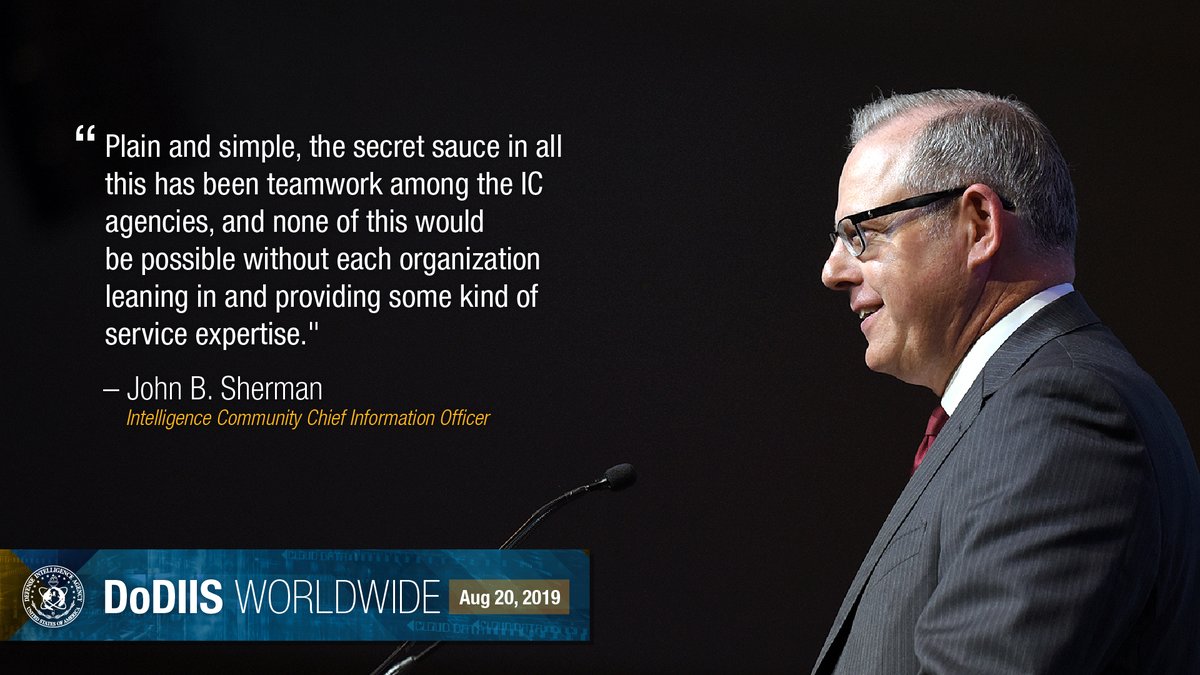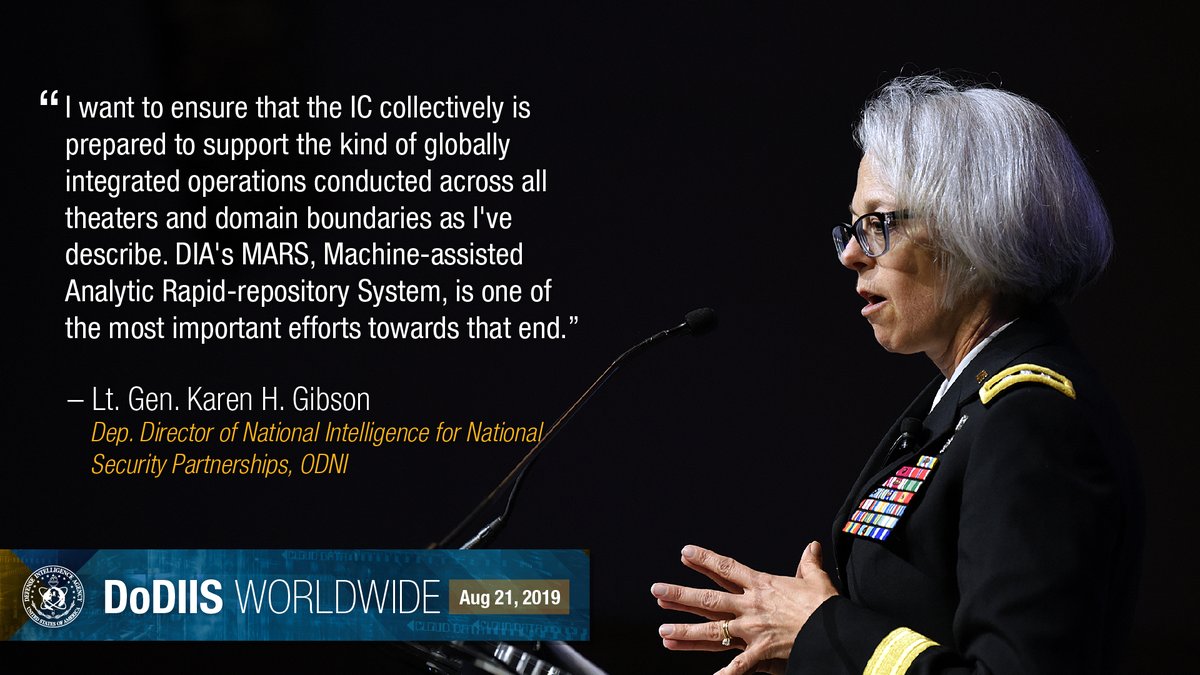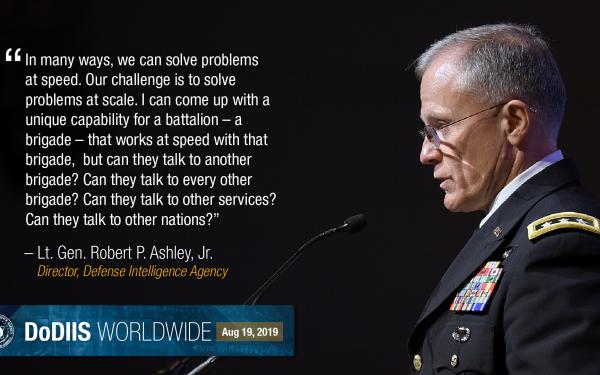This post provides insights for OODA members from the 2-5 August 2019 DoDIIS conference. We have aimed this overview for three broad types of decision-makers:
- The startup tech executive seeking to better serve government missions
- Business leaders seeking contextualized insights into global risks and mitigation efforts, and
- The government leader seeking independent views that could impact technology strategies.
Key Takeaways From The Event:
- The IC and the DoDIIS enterprise are focused on the right goals. But human nature and decision-making in bureaucratic organizations always impedes progress. Leaders in the IC and DoDIIS should ensure their programs and initiatives have the right governance programs in place to reduce the odds of failure. This applies to key programs like DIA’s new data initiative (MARS) but also activities to improve the management and security of enterprise IT.
- The DoDIIS enterprise is in need of external verification and validation of approaches by experts who know both the mission and the nature of enterprise IT.
Executive Overview:
- Cloud Computing: Government CIOs in the IC have been working for years to find ways to optimize new business models in cloud computing. As their thoughts and experience have evolved their strategy has as well. At this point, before moving workloads to the cloud serious cost benefit studies are being done and use cases tied to mission are examined. There are many analogies with what we are seeing in the commercial sector here. In both commercial and IC use of the cloud, there is a great deal of growth ahead, and that growth is being informed by lessons learned on what is optimal for mission.
- Threat Drivers: DoD and IC leaders are among the most informed on the nature of geopolitical threats and technological trends and all are clearly aware of the need for enhanced agility. But we see no indications of any changes being put in place that will make more than cosmetic improvements in the ability of government to acquire America’s greatest technologies. Providers of tech in this space will almost always be dealing with long sales cycles and should plan accordingly. Success in service to this community means putting in continuous effort to learn mission needs, track requirements and follow established government procurement procedures. Partnering and teaming strategies are critical for any firm seeking to serve.
- Legacy Systems are Anchors: The IC has huge data challenges, not just the typical ones on how to analyze massive quantities of data, but the fact that in many cases data is stuck in old legacy systems or in formats that are not conducive to making the most of the data.
- MARS Data Initiative: The DoD intelligence community has long articulated needs for new ways of managing data, and one of the most visible programs for doing this is the DIA MARS program. MARS is being championed by seniors including agency heads and three and four star Generals. They talk about the data system MARS like Elon Musk talks about building fully self-driving cars. But below the deck-plates there are indications that all is not well with this program. We sense some big changes coming meant to get this back on track. Reach out if you want more insights, but here is our bottom line: We are not confident that the current approach being taken by the government on MARS will deliver on its objectives.
- Tech Advances: The DoDIIS conference is also a great way to track developments in the tech industry. It is amazing how fast developments are going from lab to highly reliable, scalable technologies. The government could have so many more highly functional solutions right now if changes could be made to acquisition processes. For example, we saw first-hand many of VMware’s new capabilities and received updates on what they have planned next. Amazon also continues to rapidly evolve. Palantir provides an open data fabric that is providing incredible capabilities to deployed units. And the same firm that is providing the NFL with fully functioning augmented reality displays for player training (U.Group) is ready now to provide their solutions to military and IC users. Other firms of note include Percipient.AI, a provider of AI solutions that is focused on national security missions, and Primer, a provider of solutions that can help mitigate challenges of info overload for analysts.
More context:
- DIA CIO Jack Gumtow kicked off the conference with an articulation of today’s international security environment and why it is causing the intelligence community to seek to improve agility in the face of emerging threats. He was followed by DIA’s director, Lt. Gen Robert Ashely, who reiterated the importance of partnering, including partnering in government and with allies and with industry. He underscored that JWICS needs to be made more resilient and also that we need new ways of working with data, and provided his views of the new data effort called MARS, calling it their moonshot.
- ODNI CIO John Sherman provided an overview on progress made on community-wide technology capabilities to date and insights into what will come next. One key element is a new approach to cybersecurity meant to keep pace with the modernization. It will also involve architecting a federated interoperable enterprise.
- DIA CIO infrastructure lead Jean Schaffer provided an overview of Cybersecurity for DIA and DoDIIS. She underscored that the multiple networks run by DIA are under constant attack and there is a need for enhanced resiliency, reliability, survivability, accessibility and scalability in JWICS. Raising the overall security posture is also seen as a clear goal, to harden against threats including both internal and external threats. The goal is to do this while continuing to transition from just a network protection model to a data protection model. Jean’s approach to cybersecurity is to integrate best practices across all IT service lanes delivered by DIA. Operationally this is being done today, but new modernization is underway to improve the ability to automate cybersecurity. This modernization will also deliver service benefits of course.
- The Chief Data Officer of NCTC John Doyan provided insights into the approach being taken by this key IC organization to ensure that data is leveraged in defense of the nation and that it is leveraged in ways that respect America’s laws and our cultural expectations of privacy. Data is the lifeblood of the counter terrorism mission. It is both a strategic asset and a liability. It must be gathered and analyzed to protect the nation from terrorism and attack, but must also be protected and managed properly to ensure no harm is done to our populace from mis-use.
- Several other community chief data officers were featured throughout the event. There were panels that featured the DoD CDO, USDI CDO, ODNI CDO, DIA CDO and USN CDO. The topics addressed by these leaders ranged from the technical to the artistic sides of their emerging profession.
- A new Cybersecurity Analysis Framework was launched that seeks to improve agility and speed of assessing cybersecurity posture in ways that will improve and speed decision-making.
- Many key DoDIIS customers, including COCOM commanders and J2’s, were at the event. Many J2’s sat on a panel the last day of the event. This session, moderated by Michael Yambrick of ODNI, dove deep into issues at the nexus of technology and operational missions. Perhaps the most significant comment we took away from the conference was by one of these leaders. Brigadier General Dimitri Henry, USMC, is the J2 of US Central Command. He was asked on the panel what keeps him up at night, what his greatest fear is. The gist of his response was that there is little he fears, of course he realizes the seriousness of the military mission and the great costs that must be born in defense. But one concern does rise to the top. He is very concerned that things we know we must act on are not being acted on. He did not specifically call out any one particular program or project. But it sure brought to mind the DIAs current activities with the MARS program.
Images From DIA:









About the Author
Bob Gourley
Bob Gourley is an experienced Chief Technology Officer (CTO), Board Qualified Technical Executive (QTE), author and entrepreneur with extensive past performance in enterprise IT, corporate cybersecurity and data analytics. CTO of OODA LLC, a unique team of international experts which provide board advisory and cybersecurity consulting services. OODA publishes OODALoop.com. Bob has been an advisor to dozens of successful high tech startups and has conducted enterprise cybersecurity assessments for businesses in multiple sectors of the economy. He was a career Naval Intelligence Officer and is the former CTO of the Defense Intelligence Agency.
Subscribe to OODA Daily Pulse
The OODA Daily Pulse Report provides a detailed summary of the top cybersecurity, technology, and global risk stories of the day.








